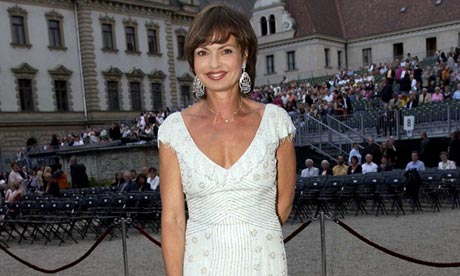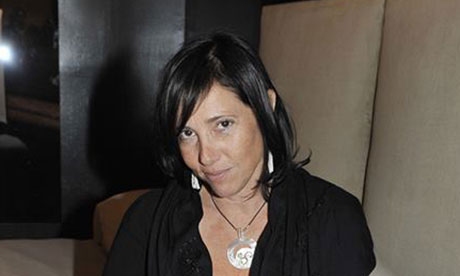
"Finally, liberal democracy is almost universally associated with market economies, which tend to produce winners and losers and amplify what James Madison termed the 'different and unequal faculties of acquiring property.' This type of economic inequality is not in itself a bad thing, insofar as it stimulates innovation and growth and occurs under conditions of equal access to the economic system. It becomes highly problematic, however, when the economic winners seek to convert their wealth into unequal political influence. They can do so by bribing a legislator or a bureaucrat, that is, on a transactional basis, or, what is more damaging, by changing the institutional rules to favor themselves -- for example, by closing off competition in markets they already dominate, tilting the playing field ever more steeply in their favor. Political decay thus occurs when institutions fail to adapt to changing external circumstances, either out of intellectual rigidities or because of the power of incumbent elites to protect their positions and block change. Decay can afflict any type of political system, authoritarian or democratic. And while democratic political systems theoretically have self-correcting mechanisms that allow them to reform, they also open themselves up to decay by legitimating the activities of powerful interest groups that can block needed change. This is precisely what has been happening in the United States in recent decades, as many of its political institutions have become increasingly dysfunctional. A combination of intellectual rigidity and the power of entrenched political actors is preventing those institutions from being reformed. And there is no guarantee that the situation will change much without a major shock to the political order." (
Francis Fukuyama)

"There are many ways to think about the Republican Party's electoral predicament — in racial terms, in sectional terms, in ideological terms. One clarifying way to conceive the problem is in generational terms — a geriatric trap.
David Frum has an
essay in
Foreign Affairs laying out his view of how the Republican Party must change in order to regain parity at the national level. Frum’s core insight is that the Republican Party fell into a self-perpetuating cycle whereby its ideas attracted mainly old people, and old people in turn shaped its ideas, and so they wound up 'reinventing themselves as defenders of the fiscal status quo for older Americans — and only older Americans.' Even while fighting a desperate rear-guard campaign to prevent, and then to destroy, universal health insurance, Republicans exempted all Americans over the age of 55 from any budget cuts. As a Fox News ratings gambit, this works splendidly. As both a long-term Republican political strategy and as a governing doctrine, it is a catastrophe. If anything, Frum’s essay actually understates the party’s failure. It wasn’t merely that Republicans protected the elderly and near-elderly from the austerity of the Ryan budget. They savagely attacked the Medicare cuts enacted by the Obama administration. The hyperbolic version of this attack was 'rationing'; the insane version was 'death panels.' As
Lamar Alexander memorably put it, while rising in opposition to universal health insurance, 'If you find savings by cutting waste, fraud and abuse in Grandma’s Medicare, spend those savings on Grandma.' They also repeatedly turned down opportunities to cut Social Security spending out of a combination of anti-tax absolutism and sheer partisan spite. The GOP’s old-person problem is on inadvertent display in a
Wall Street Journal op-ed by
Andrew Biggs of the American Enterprise Institute. Biggs is professionally committed to cutting Social Security, and the column is devoted to the need to restore solvency to the Social Security Trust Fund, which certainly ought to be a conservative priority. Yet Biggs finds himself dancing awkwardly around the reality that Obama is the one who has proposed to do the thing he advocates, and Republicans are the ones who stopped him. His excruciating contortions highlight the impossible predicament faced by Republican entitlement hawks trying to defend the party line." (
Jonathan Chait)

"There are 65 prominent people who might run for president in 2016. The Democratic and Republican fields contrast sharply.
Hillary Clinton is the clear front-runner, while there is no front-runner on the Republican side. Twenty-three Democrats have been mentioned as a candidate or are eyeing a bid, according to an analysis by The Hill. The GOP side has 42. Most of the people on this list won’t run, and some have adamantly claimed that they’re not interested. But many politicians have changed their minds on seeking the White House. Before mounting his 2008 bid, then-Sen.
Barack Obama (D-Ill.) said he wasn’t running. The following is The Hill’s list of 65 people who might run for president in 2016 ...
Russ Feingold — The liberal darling mulled a 2008 bid before losing his reelection race in 2010 ...
Maryland Gov. Martin O'Malley — Uphill climb for O’Malley. How tough? Three members of the Maryland delegation (Sen. Barbara Mikulski and Reps. Steny Hoyer and John Delaney) have already said they would back Clinton in the Democratic primary ...
Massachusetts Gov. Deval Patrick — Will likely run for president at some point, but not in 2016.
Sen. Bernie Sanders — The liberal Sanders, who is technically an independent, has said he would challenge Clinton if no one else from the left launches a bid.
Brian Schweitzer — The former governor of Montana has had a rough summer.
Sen. Mark Warner (Va.) — Warner stunned political observers, when he didn’t run for president in 2008. He instead ran for the Senate and is up for reelection against Ed Gillespie this fall.
Sen. Elizabeth Warren (Mass.) — Unlike Clinton, Warren has been busy on the campaign trail for Senate candidates." (
TheHill)

"Iceland is bracing for a possible eruption at its
Bardarbunga volcano for the first time since 1996, after about 800 earthquakes in its vicinity in the past few days prompted the nation's Met Office to raise its alert level for the mountain to 'orange,' signifying 'increased potential of eruption.' In April 2010, Iceland's Eyjafjallajokull erupted, leading to more than than 100,000 flight cancellations over the North Atlantic and Europe amid concern lava-loaded ash might destroy aircraft engines. Among the hardest-hit by the flight ban were Kenyan exporters, left with no way to get $12 million of produce to the international market. Kenya is the
world's largest exporter of black tea, and it's the nation's biggest foreign-currency earner. So the Trade of the Day is to settle down to a cup of Kenyan tea while stocks last. And, if you have a European flight planned for the next few weeks, you might check your travel insurance while you're sipping."
(Bloomberg)
| As well as events surrounding her family, Frazer's scrapbooks include published images of her friends |
"In March 2011, New York Social Diary featured the first part of a series
Philadelphia in Palm Beach: 1920-1931 adapted from
Ellen Glendinning Frazer Ordway's voluminous biographical scrapbook of photographs. For this next chapter, I perused the more than 3,000 images Ellen Frazer compiled in a six-volume set recording her life from 1931 until Spring 1935, beginning with the family's top-of-the-world year abroad and ending at Palm Beach following the divorce that ended her fourteen year marriage to
Persifor Frazer III. A prolific photographer, Frazer utilized small-format roll film to capture the everyday events of her family and friends as well as kept a record of her friends' milestones when they made headlines in newspapers and magazines. Unlike the era's commercial images produced by celebrity photographers like
Bert Morgan or the 'portrait of the good life' conveyed by
Slim Aarons, these photographs are of a far more private nature. But, while the photographic quality of Morgan's and Aarons' images have been maintained, most often printed from the original negatives, because Frazer's images were developed utilizing the chemically-unstable machine processing of the 1930s they reflect a degradation of image quality. In general, I arranged the images in chronological order with some exceptions. I combined three consecutive summers into Watch Hill, 1932-1934. Likewise, I merged several winter seasons into Palm Beach, 1932-1935. The year the Frazers spent in Europe I have kept in its original order. I placed quotes around captions when I transcribed them as Ellen Frazer wrote them." (
NYSD)

"
Russia and
Ukraine continue to confront each other along their border. Iraq has splintered, leading to unabated internal warfare.
And the situation in Gaza remains dire. These events should be enough to constitute the sum total of our global crises, but they're not. On top of everything, the German economy contracted by 0.2 percent last quarter. Though many will dismiss this contraction outright, the fact that the world's fourth-largest economy (and Europe's largest) has shrunk, even by this small amount, is a matter of global significance. Europe has been mired in an economic crisis for half a decade now.
Germany is the economic engine of Europe, and it is expected that it will at some point pull Europe out of its crisis. There have been constant predictions that Europe may finally be turning an economic corner, but if Germany's economy is contracting (Berlin claims it will rebound this year), it is difficult to believe that any corner is being turned. It is becoming increasingly reasonable to believe that rather than an interlude in European prosperity, what we now see is actually the new normal. The key point is not that Germany's economy has contracted by a trivial amount. The point is that it has come time to raise the possibility that it could be a very long time before Europe returns to its pre-2008 prosperity and to consider what this means. The German economy contracted despite indications that there would be zero economic growth. But the rest of Europe is faltering, too. France had zero growth. Italy declined by 0.2 percent. The only large European economy that grew was the United Kingdom,
the country most skeptical of the value of EU membership. Excluding Ireland, which grew at a now-robust rate of 2.5 percent, no EU economy grew more than 1 percent. Together, the European Union scarcely grew at all. Obviously, growth rate is not the full measure of an economy, and statistics don't always paint the full picture. Growth doesn't measure social reality, and therefore it is important to look at unemployment. And though Europe is fairly stagnant, the unemployment situation is truly disturbing. Spain and Greece both have around 25 percent unemployment, the level the United States reached during the Great Depression. While that's stunning, 15 of the 28 EU members have unemployment rates of more than 10 percent; most have maintained that high rate now for several years. More alarming, these rates are not falling.Half of all EU residents live in four countries: Germany, France, the United Kingdom and Italy. The average growth rate for these countries is about 1.25 percent. Excluding the United Kingdom, their economies contracted by 0.1 percent. The unemployment rate in the four countries averages 8.5 percent. But if we drop the United Kingdom, the average is 9.2 percent. Removing Britain from the equation is not arbitrary: It is the only one of the four that is not part of the eurozone, and it is the country most likely to drop out of the European Union. The others aren't going anywhere.
Perhaps the United Kingdom isn't either, but that remains to be seen. Germany, France and Italy, by population if nothing else, are the core of the European Union. They are not growing, and unemployment is high. Therefore, Europe as a whole is not growing at all, and unemployment is high. Five to six years after the global financial crisis, persistent and widespread numbers like this can no longer be considered cyclical, particularly because Germany is running out of gas. It is interesting to consider how Germany has arrived at this point."
(STRATFOR)
 |
| The cocktail hour before the dinner at the ARF 40th anniversary benefit on Saturday night. |
|
"
Regular NYSD readers know how much animal rescue means to us here at NYSD. Both JH and I have adopted pets. One of JH’s adored pets was
Oliver Dog adopted at age 3 at an annual ARF gala thirteen years ago. Oliver had had three homes before he met Jeff. He became a beloved member of the family, gracing them with his presence until he went to Dog Heaven two years ago, then mourned by all who ever knew him.
This year was a special year not only because of the anniversary but because ARF’s staff has done an incredible job in caring for the animals and in increasing the numbers of adoption. In the past 40 years they have saved 20,000 animals (!). Last year, they adopted out 1134 dogs and cats. This year they have set a goal of 1300 adoptions and from the looks of things right now, they may exceed that number. They have so far adopted out 735 little beauties and lovebugs and kitty cats, an increase of 18% over last year at this time – 112 more lives saved!
| More than 400 attended the gala which was held on the ARF grounds in a tent set up on their dirt parking lot – although you’d never have known it when you saw the finished product. David Monn and Alex Papachristidis decorated the tent and provided the white carpet and handsome dance floor. The white “balloons” you see rising to the top of the tent were lent by David, who also trucked the blue and white porcelain out from Manhattan. They used 1500 Sunflowers from local East End stands. Babinski Flower Stand and Lisa & Bill’s in Wainscott provided them at cost. A list of ARF Angels put the event together. There was an auction led by Benjamin Doller, Executive VP and Vice Chairman, America of Sotheby’s. He raised close to $132,000 for ARF, the majority already earmarked for 9 Puppy Mill rescues. Steve Kroft of 60 Minutes emceed. Steve and his wife Jennet Conant share their home, and have for years, with a dog from ARF. Leslie Stevens provided the PR, and Sean Driscoll’s Glorious Food catered the affair with an excellent summertime menu." (NYSD) |
 |
|

"The
Post has come out boldly in favor of catcalling ... The saddest thing about
these unimaginatively provocative stories—the DON'T HATE ME FOR MY PRIVILEGE essays, the CALM DOWN, PEOPLE! rants—is that the best-case outcome is the education of one person: The writer-subject, who will become either permanently entrenched or emotionally broken as a result of the ensuing backlash. Otherwise, the ripples don't even make it to the edge of the pond. Some readers nod their heads and turn the page; others click, think 'oh [hell] no,' and generate some angry social media. It's first and foremost a human sacrifice intended to insert a small thrill into the paper: the private thrill of reading your horrible opinion expressed in public at no personal cost (there but for the grace of god!), or the more public thrill of identifying something utterly and completely wrong." (
TheAwl)






































